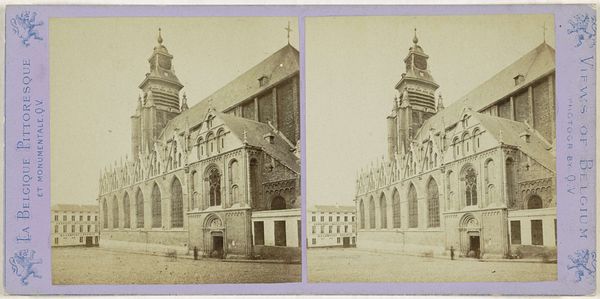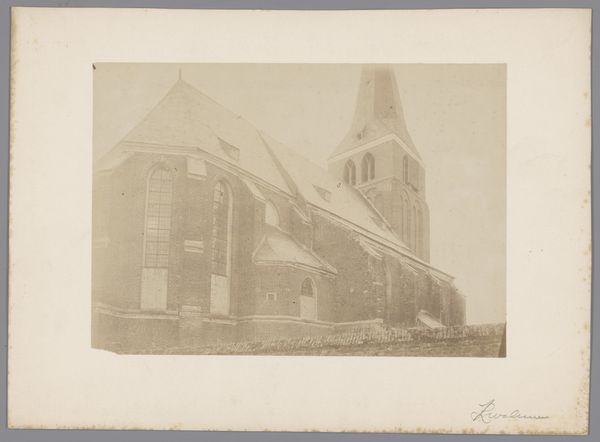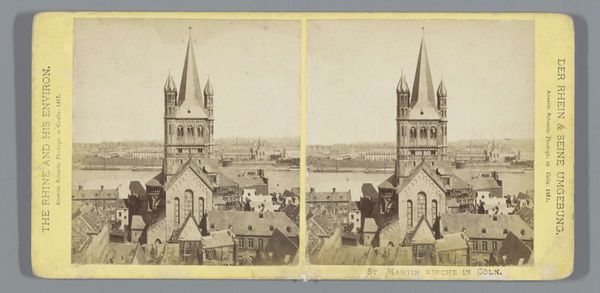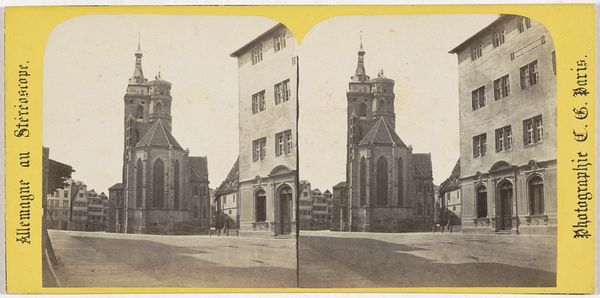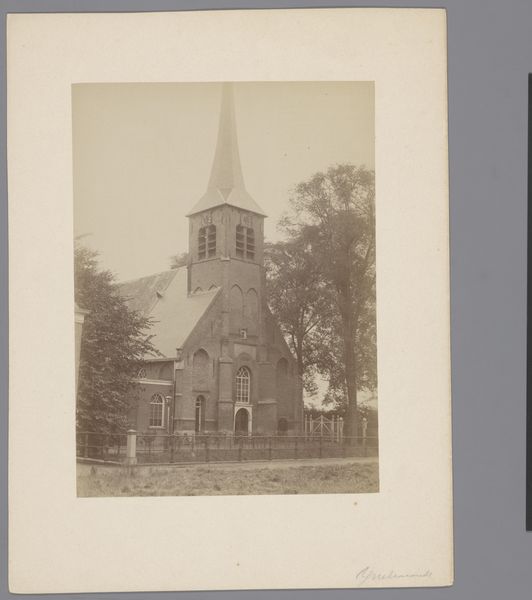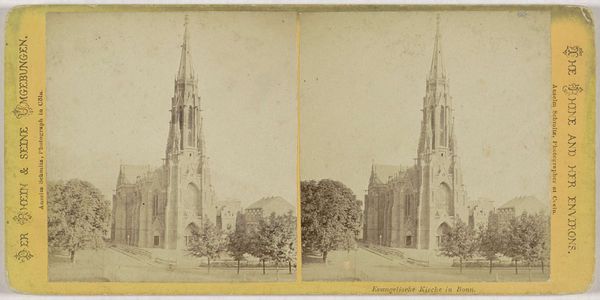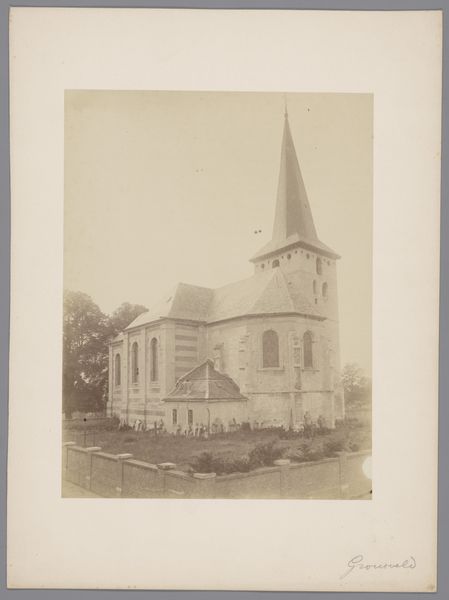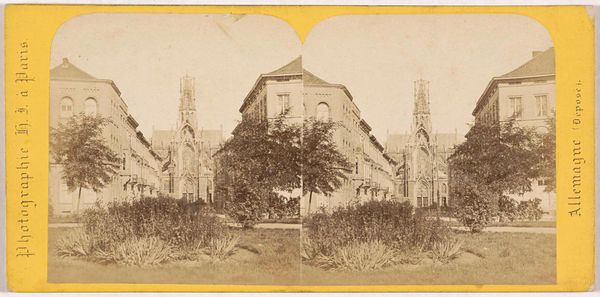
Dimensions: height 83 mm, width 175 mm
Copyright: Rijks Museum: Open Domain
Curator: What immediately strikes me is the stillness, almost a quiet dignity in this image of Sint-Kunibertkerk, in Cologne. It's by Theodor Creifelds, a gelatin silver print dating roughly between 1855 and 1875. Editor: Absolutely! It has this dreamlike quality, right? A little faded, almost sepia-toned, which lends it a vintage romance. Like something lifted from a half-remembered story. Curator: The photographic process itself is central here. Gelatin silver prints gained popularity in the mid-19th century, a time of immense social upheaval. The emerging technology allowed for greater reproducibility, shaping the collective visual memory and disseminating ideologies of urban development and national pride, often at the expense of marginalized communities. Editor: Oh, I get that on a gut level, I do! The symmetry pulls me in; I love how the perspective makes the church both massive and somewhat... unattainable. A place of solemn reflection perhaps, or maybe a representation of societal ideals we keep striving towards? Curator: Considering the era, we can analyze this as a conscious act of preserving architectural heritage, a prevalent trend among the European upper classes who aimed at linking national identity to distinct styles. Photography offered them an easy way to document, classify and make assertions of what constituted “culture.” Editor: Mmm. It makes me wonder who’s in the foreground, in that tiny silhouette… Someone paused, contemplating eternity, maybe? The little fence—or barricade?— almost seems to dare the person to enter that sanctified space, like crossing into a secret garden of history. Curator: It reminds us that even seemingly objective mediums like photography are enmeshed in intricate social and political power relations. Understanding photography's role during periods of imperialism helps decipher how specific narratives were promoted and dissenting voices silenced. Editor: In essence it invites me to see how far we’ve travelled… What foundations remain of those initial dreams, aspirations cast in stone… Makes you think. Curator: Precisely, it encourages a continuous process of questioning and uncovering multiple narratives hidden beneath established images. Editor: Well, for me it whispers of ancient stones and even more ancient longings.
Comments
No comments
Be the first to comment and join the conversation on the ultimate creative platform.
